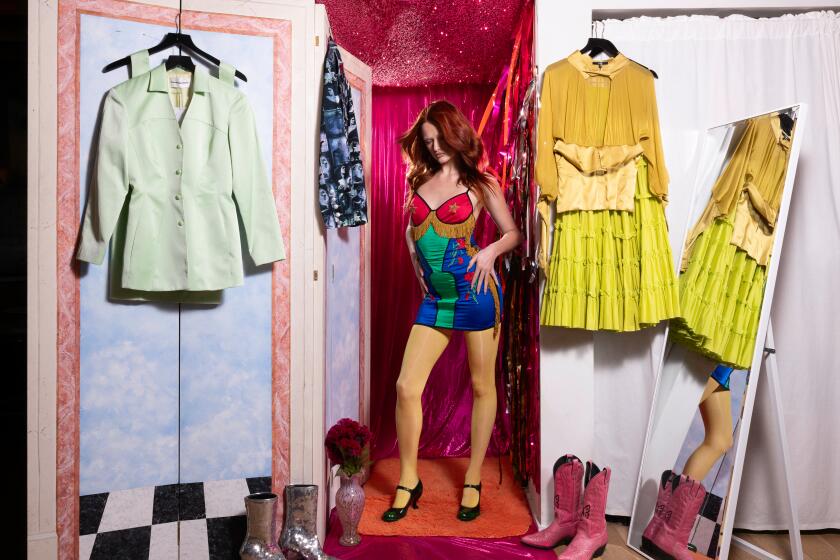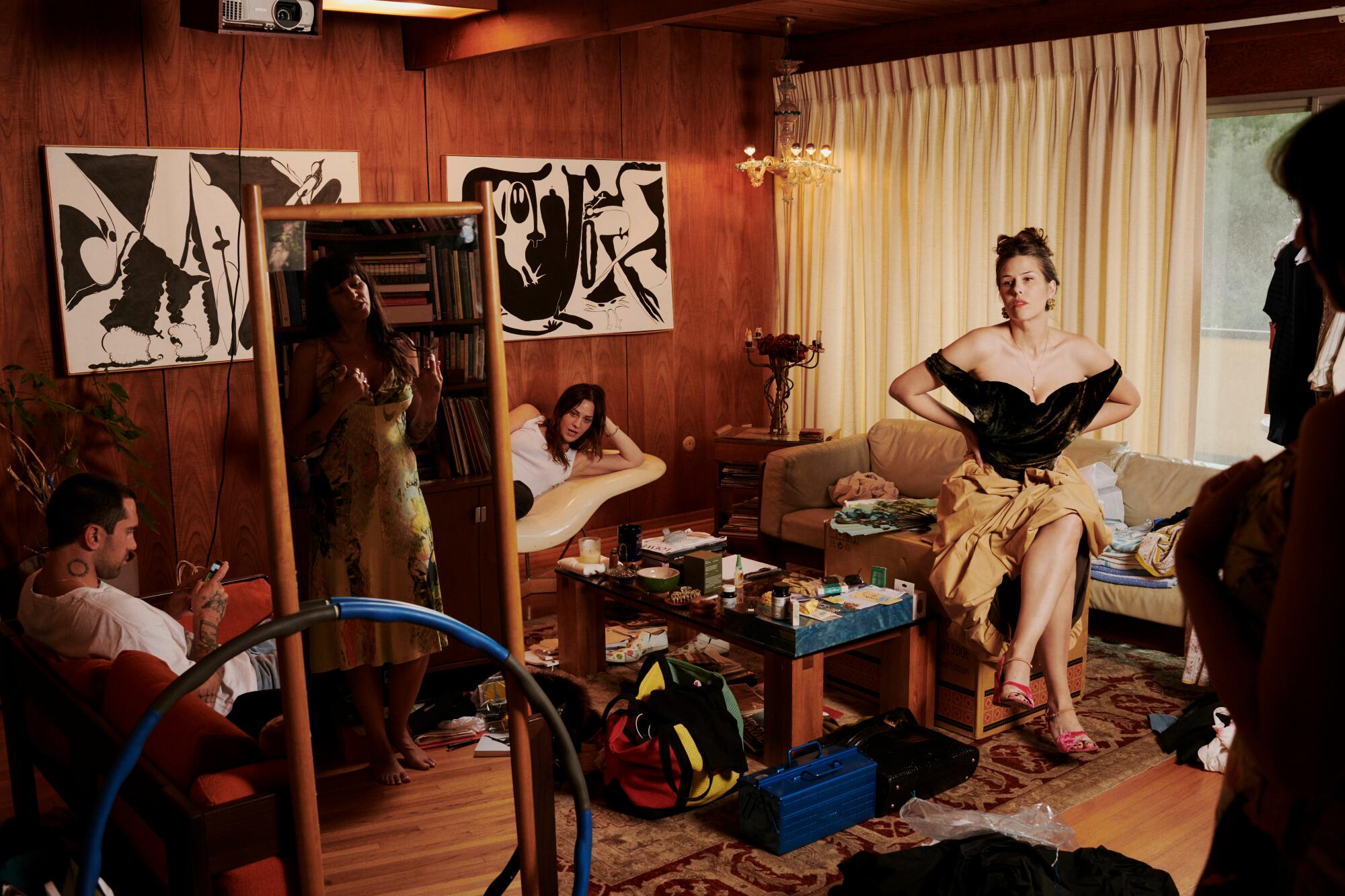
- Share via
This story is part of Image’s September Image Makers issue, celebrating some of the most daring and innovative artists working in fashion today.
How do you know how to dress someone when that person technically doesn’t exist? This inane yet genuine question burned in my mind when I sat down to interview Natasha Newman-Thomas, an award-winning costume designer. Newman-Thomas is the sartorial mastermind behind TV shows including HBO’s “The Idol” and Childish Gambino’s iconic “This Is America” music video (which garnered her a Costume Designers Guild award). Known for her character-driven approach and highly distinctive, vintage-inflected eye, Newman-Thomas explains to me that costume design requires not only a deep understanding, passion, and technical proficiency for clothing design and fashion styling: it also requires an ability to conjure and then investigate a fictionalized character’s psychological makeup. The answer to my question, in short, is that you have to believe in an illusion in order to make it a believable reality.
When you see an actor or musician in a costume designed by Newman-Thomas, the outfit looks authentic in a way that is almost unnoticeable — and this is the point. The selection and styling of the clothes appear so natural and unique to the character that it seems as though they showed up to set wearing it. Her latest subjects are Keanu Reeves and Cameron Diaz in the upcoming film “Outcome,” directed by Jonah Hill. While Newman-Thomas couldn’t get into the details of those characters yet, she shared the peculiar and fascinating details of her art with me and made the case for why flying helicopters is more interesting than sitting through a group critique in art school.

Costumes are the first place where you get to begin storytelling without actually knowing someone.
— Natasha Newman-Thomas
Eugenie Dalland: My Gen-Z cousin had never seen “The Matrix” before, so I recently watched it with her. I realized how crucial all those latex and black leather costumes were to the tone of the film. Why are costumes so important?
Natasha Newman-Thomas: Costumes are the first place where you get to begin storytelling without actually knowing someone. It’s crucial on screen because you want to know as much about a character as you can, instantly, in order to get the viewer involved and on board. If you’re in a dystopian future like “The Matrix,” the costumes pull you in and make you believe in that world and in the story on a surface level.
ED: I’m curious about the nuts and bolts of creating these characters, what you’ve called the “sociological exploration” involved in building them. Who is involved in this process?
NNT: It depends on the project. Sometimes I have one initial conversation with the director, and then they turn the whole thing over to me and let me do my thing. Other times, the director is super involved and we get into the nitty-gritty about every character. And then I’ve been on projects where I do that with the actors, which I like doing because it’s part of the character development for them. It’s super informative for both of us to have those conversations and figure out why a character behaves a certain way, the things that inform who they are, their pathologies.
ED: Shopping is a big part of costume design. What kind of mindset are you in when you’re buying clothes for a character? I imagine it’s sort of meditative.
NNT: It’s definitely meditative! I’m almost trying to put myself in their mental state, and then imagine how they would acquire clothing. Where would they shop? Or would their character only wear hand-me-downs? If so, where would those come from? Someone from their church, a sibling?
Even if you’re just trying something on for a few minutes before returning it to the rack, it’s thrilling to study, firsthand, the work of major designers’ artistic visions and how they have evolved.
ED: I feel like this psychological approach is why your costumes always feel so personalized and unique. It makes the characters more believable as actual individuals. You’re not throwing them into whatever is trendy.
NNT: There’s totally something to be said for capturing a moment in history with [trendy costumes], but typically I strive to make something timeless. I try to make things as unique to the characters as possible.
ED: I’ve always wanted to ask you about the outfit Childish Gambino wears for the “This Is America” music video, which you costumed. It’s very minimal — vintage pants, no shirt, gold chains — but he looks so f—ing cool and moreover, totally natural, authentic. I almost wondered if he showed up to set wearing that look.
NNT: It’s funny you say he looks really natural and embodies the outfit well, because up until 20 minutes before the shoot, Donald [Glover] and I were going back and forth about it. He was like, “I’m not comfortable in that, it inhibits my performance, I just want to wear sweats.” I was like, “no way, sweats are a completely different message, it’s really crucial that these are the pants you wear. If it’s inhibiting your movement, I’ll sew in a gusset.” I was literally sewing a gusset into those pants up until 30 seconds before we shot! I just did another project with Donald a few months ago and he was like, “by the way, you were right about the pants.”

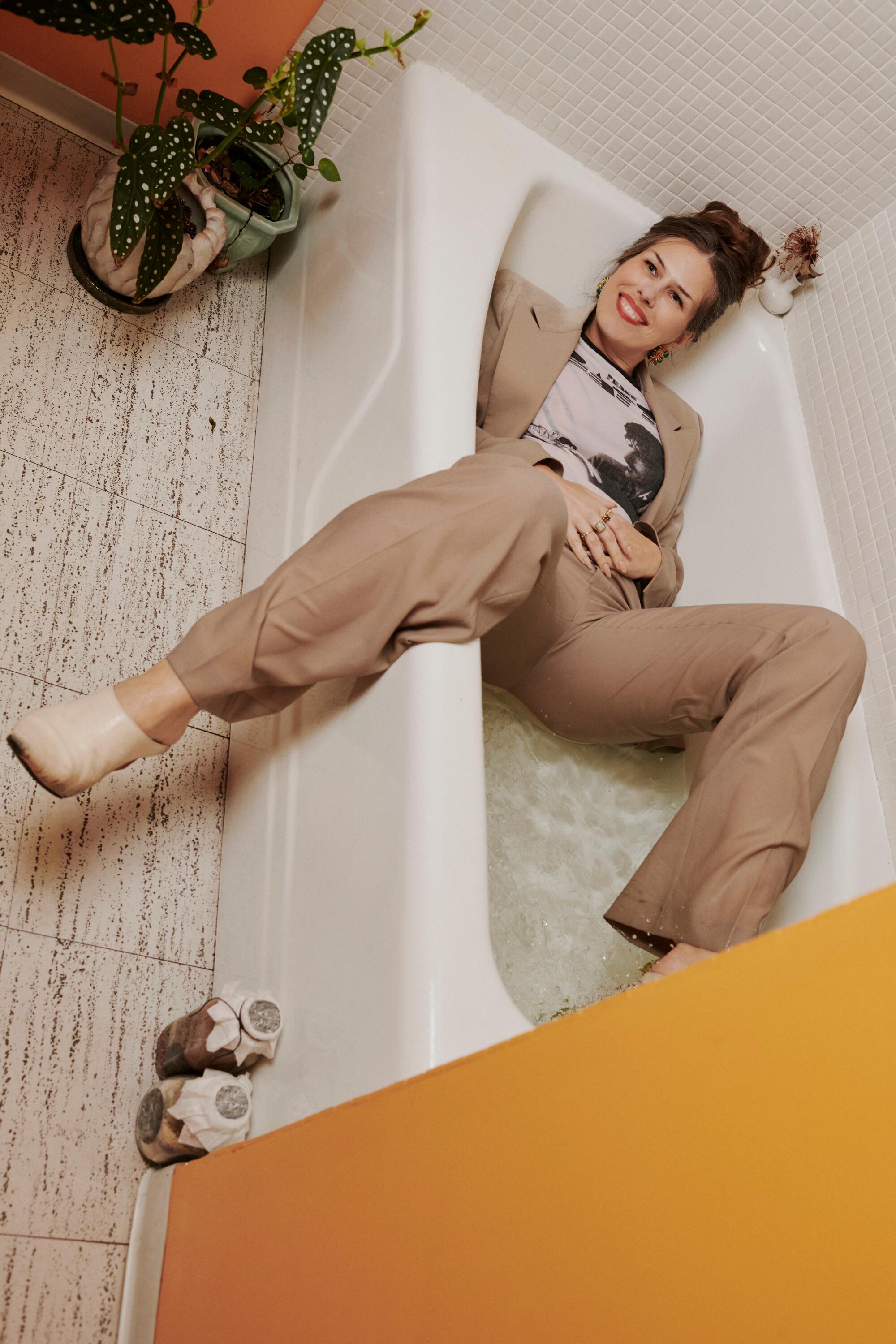
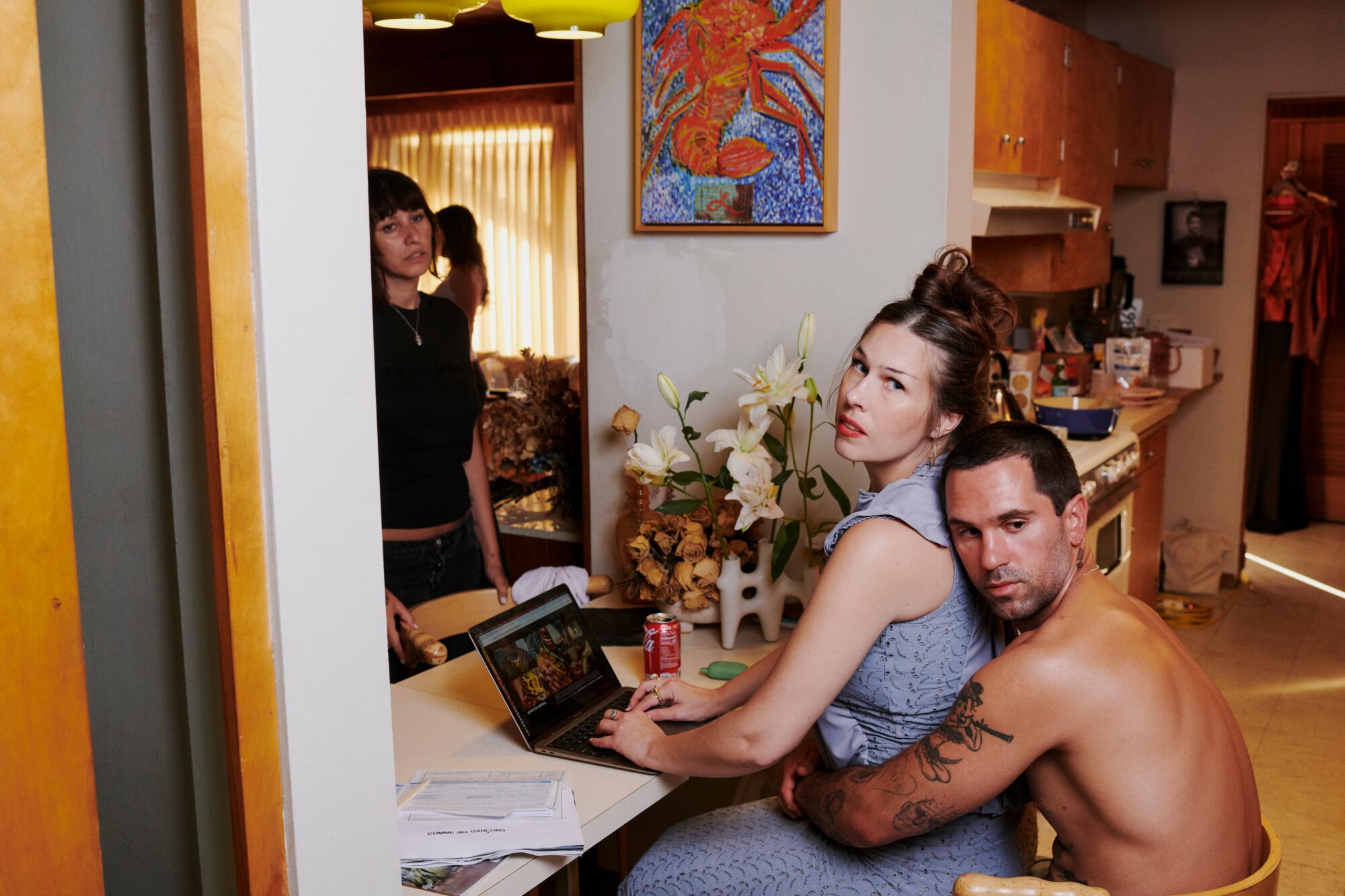
ED: What were you aiming for with his costume?
NNT: We referenced some Fela Kuti images, but also the idea of someone who acquires clothes and then really makes them their own. Someone who finds a pair of pants and makes them look sick by styling them in a specific way. That was so important because we didn’t want it to look or feel new, typical, or trendy.
ED: How did you get into costume design?
NNT: I went to the School of the Art Institute of Chicago because they didn’t make you choose between fashion and fine art, you could do both, which is what I wanted. But eventually I had the rude awakening that you really couldn’t do both. I took every fashion class I could without committing to being in the fashion design program there. A few years in, I realized I didn’t want to sit through a critique and hear people bulls— about “juxtaposition” ever again. I decided to drop out and move back to L.A. and go to helicopter school to be a pilot.
ED: Wait, what?
NNT: There’s a nonprofit program at the Compton Airport. It’s amazing. I’d love to go back and finish my flight hours and get my license. Anyway, while I was there, an old professor friend of mine from the Art Institute called and said, “I’m moving to L.A. to do costumes on this show, I’d love for you to try assisting me.” My first day on set I was like, “this is literally made for me, it combines all my interests.” The pacing, the creative problem solving, the clothes, the character development, all of it. That was it. Day One. I feel very blessed that I found a job where I can make money and do what I love.
“How Directors Dress,” a new book from A24, digs deeply into the phenomenon of the director as moodboard inspo.
ED: What are some movies that made a strong impression on you in terms of costume design?
NNT: There’s so many. I actually just did a symposium about [Jean Paul] Gaultier’s costumes for “The Fifth Element.” I also love his work on “The Cook, the Thief, His Wife & Her Lover.” The costume design really blends with the production design, it’s so artful.
ED: What’s an unexpected shopping tip you tell people?
NNT: This is so cheesy: Be clothes minded, not closed minded. [laughter] I love to go into a shopping experience with the idea that you can really style anything to make it interesting. A game I’ll play with my best friend is we’ll send each other pictures of things and ask, “how would you make this cool?” Like “how would you make a pair of Toms cool?” I love a good challenge.
ED: How do you make a pair of Toms cool?
NNT: The way I would do it is to cast a Toms shoe in a block of resin, and then put another Toms shoe on top of it. So it’s a platform shoe with the Toms inside the platform and then the other one on top.
ED: Please make this shoe.
NNT: Our first question when we start anything is what’s not cool right now, what is no one doing, and how can we use that to our advantage? We did an Yves Tumor music video and I was like, “no one is doing indie sleaze right now, I’m going to cover a pair of jeans in the Strokes patches, that’ll be so weird!” Two years later, the Strokes were playing the Celine show. It’s fun to try to get ahead of the cycle. It’s getting harder to do because with the internet, everything moves so much faster now, people just gobble up trends. But it’s creating an interesting position for designers to be forced to come up with new things that no one’s seen before, that aren’t referential. I think it could be really exciting. Fingers crossed.
Hair & Makeup Paige Wishart
Lighting Director David Lopez
Styling Assistants Margaux Solano, Tommy Petroni
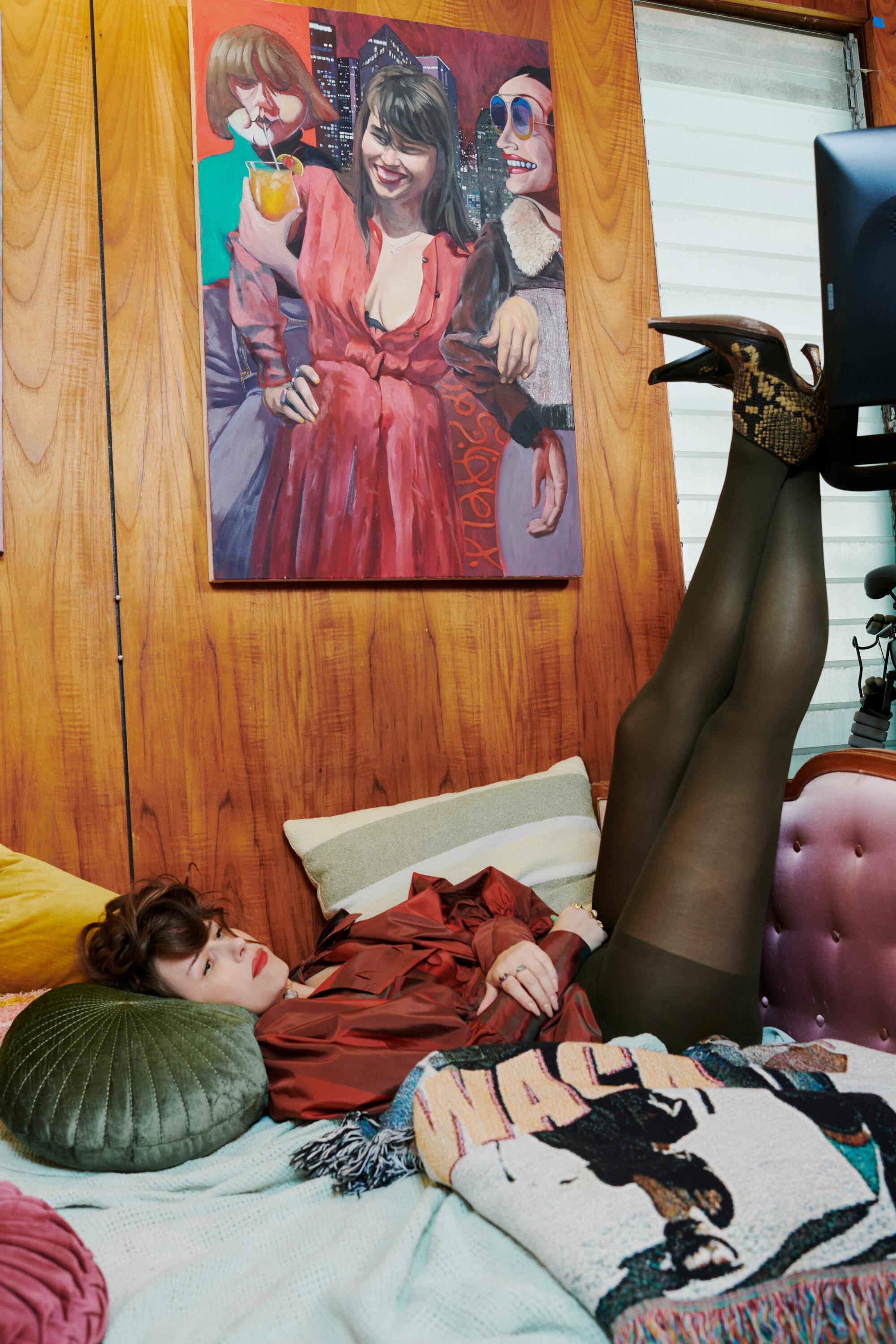

Eugenie Dalland is a writer based in New York. Her essays, profiles and reviews have appeared in the Los Angeles Review of Books, Hyperallergic, BOMB, Cultured Magazine, the Brooklyn Rail and elsewhere. She publishes the arts and culture magazine Riot of Perfume.

